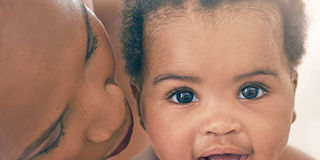Understanding your baby’s skin conditions

Parents are required to remain vigilant over skins of their children. PHOTO/COURTESY.
Here is what you need to know about common infant skin conditions to keep your little one’s skin smooth and blemish-free.
Infant acne
About 40 per cent of babies develop infant acne, which commonly pops up at two to three weeks of age and can often last until the baby is four to six months old. These pimples are likely caused by your hormones, which are still circulating in your little one’s bloodstream and stimulate baby’s sluggish oil glands, causing red bumps to appear. Do not squeeze, pick, scrub with soap, slather with lotions, or otherwise treat your newborn’s acne. Just wash it with water two or three times daily, pat it dry gently and never use creams meant for grown-ups.
Cradle cap
See some crusty yellow scales, deep red bumps and dandruff-like flakes on your baby’s head? That’s cradle cap (called dandruff in older kids and adults), which is very common in infants in the first three months and can linger as long as a year.
What to do? Not much since cradle cap is harmless, but if you cannot stand looking at the flakes, try massaging your baby’s scalp with petroleum jelly or mineral oil to loosen dead skin, followed by a thorough shampoo to wash away flakes and excess oil.
Dry skin
Your plan of attack against dry skin: Hydrate. Work from the inside out, making sure your baby gets plenty of fluids from breast milk and/or formula. Then, rub on a hypoallergenic lotion after baths. If dry patches start to spread, crack or seem painfully itchy, talk to your pediatrician, who may recommend special lotions, soaps or shampoos.
Heat rash
Although heat rash usually fades on its own within a week, it can be itchy and uncomfortable for your baby. One way to treat it is with a cool bath, but avoid powders or lotions that can further block the sweat from flowing. Call the doctor if increased swelling or redness develops.
Diaper rash
Is your baby sporting a sore, red and bumpy bottom? Then they are most likely experiencing diaper rash, a skin irritation that is typically caused by too much moisture, too little air and irritants such as urine and stool. Your best defense is to keep the baby’s diaper as clean and dry as can be by changing it frequently.
Source: whattoexpect.com




